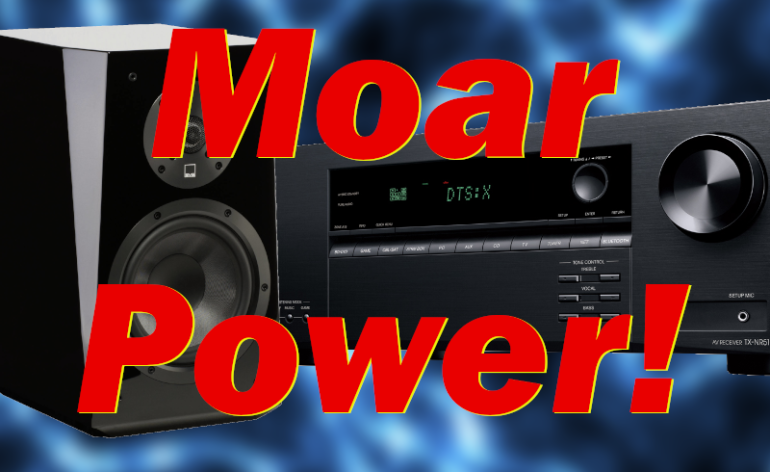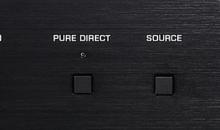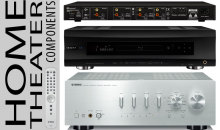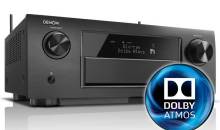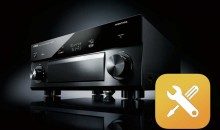Does Your AV Receiver Have Enough Power For Your Speakers: How To Know
Concern about amplifier power and speakers is a common one. People want to know that the AV receiver they are buying has enough power for the speakers they either have or are planning on purchasing. We get it. You don’t want to underbuy a receiver and not have enough power. The simple truth is that speaker and receiver manufacturers are aware of this concern and have pretty much designed all consumer-level gear to work well with each other. But if you absolutely want to know that your AV receiver has all the power it needs for your home theater speakers, here’s how.
Check Out the Impedance of the Speakers
Yes, we know that every set of speakers has a power handling rating. Yes, we are also aware that every receiver has a wattage rating. These are mostly meaningless. The thing you have to know is that there are tons of ways to determine how much power a receiver is putting out. We’ve seen receivers from the same manufacturer that are rated with slightly (think 5 watts) higher power output but almost no change in weight. That means they didn’t really change anything within the receiver, they just modified their measurements so they could report a slightly higher number.

What’s important is the impedance of the speakers. Moreso than the power of your AV receiver is how low your speakers’ impedance dips. A speaker with a nominal 8-ohm impedance rating is considered very easy to drive. This means that your AV receiver will have little problems providing the speakers with the power they require. Speakers that are 4-ohm nominal may be okay as well, but it is a little dicier. What you don’t want is a speaker that has dips in its impedance curve that sends it down to 3 or 2-ohms. This can overtax the amplifiers in your AV receiver as it tries to send more power than it has to the speakers.
How do you know the impedance dips on a set of speakers? Look for a minimum impedance rating. Many review sites will state this or you can contact the manufacturer directly. If the minimum impedance is very low, you’ll want to know where in the frequency range it takes place. If it dips right where you’ll be asking the speakers to operate, then it is a problem. For example: In a speaker you might use as a front speaker, if the dip is above 80Hz, it is a problem. Below 80Hz, less so because you’ll be crossing your speakers over into your subwoofers. But impedance isn’t the only issue.
Speaker Placement
A speaker that is classified as “hard to drive” doesn’t mean you can’t hook it up to a standard AV receiver. It just means that you won’t be able to play it very loud. If the speakers you’ve chosen will be fairly close to you, then low impedance dips are less of a concern. A surround speaker that might be within five feet of your seat isn’t as concerning if it has low impedance dips. You’ll never be asking it to play very loud anyhow. But if it is farther away, you should be more concerned.

In fact, as we’ve mentioned, the distance from your seat is the number one thing you need to worry about with speaker performance. As you double the distance between you and a speaker it reduces the volume by 6dB. To increase the volume by only 3dB, you must double the number of watts your amplifier puts out. So, say you are sitting one meter away from a surround speaker. That speaker can hit 90dB with 2 watts for example. If you have another speaker that is two meters away, you now need 16 watts to hit 90dB. Keeping your speakers closer means you are ensuring that your amplifiers won’t get overtaxed.
What About the Receiver?
If you are shopping online or in a big box store for your speakers and AV receiver, you really don’t need to worry about calculating your power. Most consumer-level speakers are 8-ohm nominal with no low impedance drops. Most receivers, regardless of how much power they say they have, will do just fine powering your speakers from a reasonable distance.
But there is one concern. AV receivers are being asked to power more and more speakers. Many can power nine, some can power even more. One thing we’ve noticed is that they have problems if you actually try to use the receiver to power all of those speakers. It isn’t that they can’t do it, it is that they end up adding noise.

The noise floor of your AV receiver is the amount of background noise that is made without anything being played. If you want to know the noise floor of your AV receiver, or any amplifier for that matter, turn the volume up to the level that you normally listen. Now, press pause. Can you hear any hiss? If you can, that is the noise floor. If you can’t, move closer to your speakers. You may notice a slight hiss eventually.
When asking even a modern AV receiver to power nine or more speakers, you may find that the noise floor increases in volume. If you can’t hear it from your seated position, it isn’t a problem. But, if you can, you’ll want to either add an external amp for one pair of those speakers or lower the speaker count in your home theater.
Conclusion
In nearly every case, the concern about whether or not your AV receiver has enough power for your home theater speakers is moot. It nearly always does. But if you want to be sure, you can check out a few stats and know. If you are sitting closer than 12 feet and the speakers are 8-ohm nominal, you really have nothing to worry about. And, honestly, that is most of us.

